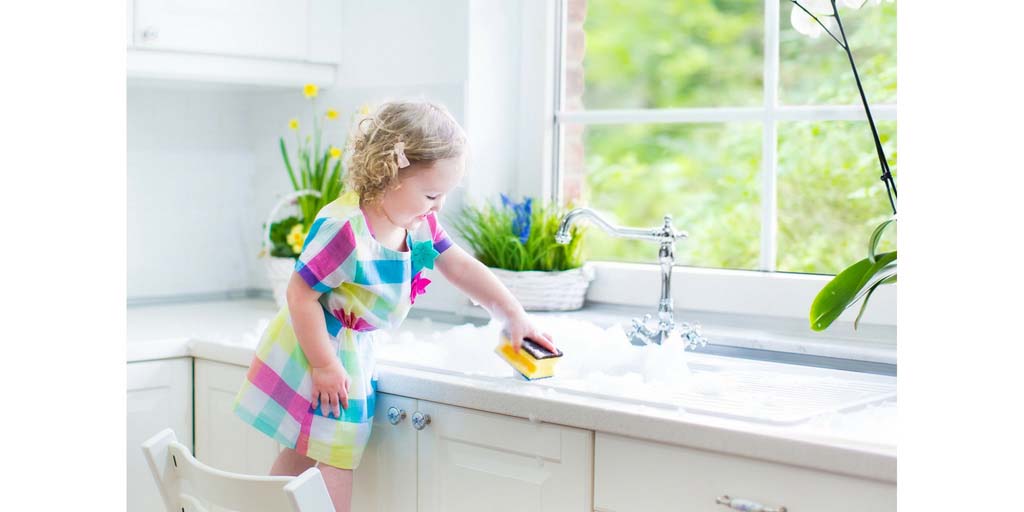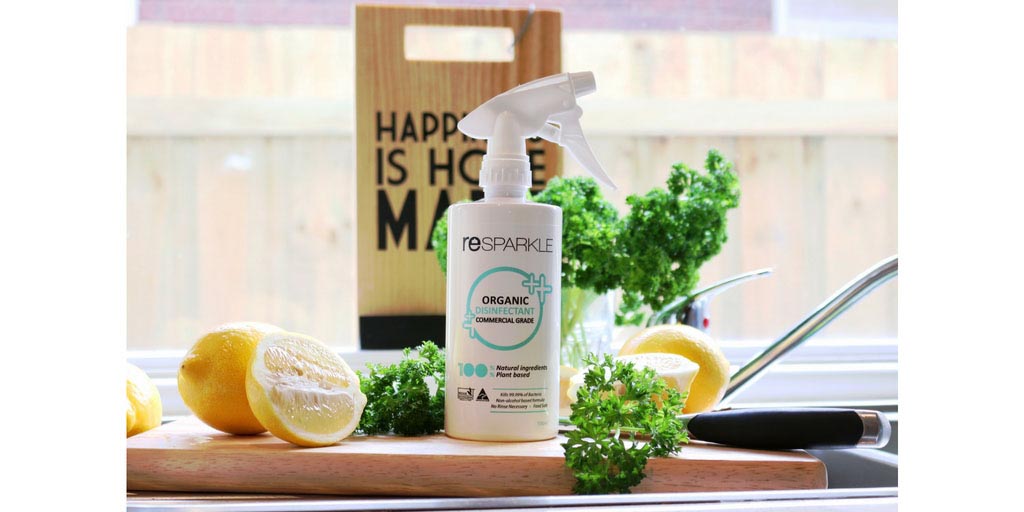Your Cart is Empty
This week I feel very lucky to have Resparkle as a guest on the blog teaching us about How to Detox Your Home for Happier Kids This Spring.
While cleaning is (quite literally) a chore, it’s mostly common sense. Right?
Wrong.
When you become a parent, not only do reduce your sleep and double your grocery list, you also add to the cleaning repertoire you’d become accustomed to as an adult. Because now, you’re not just cleaning for cleanliness. You’re also cleaning for your children’s safety.

Obviously, it’s impossible to rid the home of all germs — in fact, the presence of some germs is necessary for building up immunity — but while our grown-up bodies already have fully-developed brains and immunity systems, your little ones don’t. Since their internal organs and bodily defenses are still developing, their bodies are much less capable of getting rid of toxins.
But before you go into a spray-n-wipe frenzy, keep calm and read on. We’ve compiled a list of the 5 most important things you may be missing in your attempt to create a clean and safe home for your little ones.
1. Clean Children’s Toys
While you probably don’t look at your child’s teddy bear collection and think ‘Danger!’, plush toys can be a hotbed for all manner of nasties — as well as one of the most overlooked areas in any parent’s cleaning routine. Research has found that cuddly toys and even game console controls — when not cleaned regularly — are particular magnets for vomit-inducing bacteria. And considering toys usually spend as much time in toddlers’ mouths as in their hands, this ain’t good.
Instead of tucking Barbie into bed at the end of the day, try popping her into a bucket of laundry detergent, leaving her in some sunshine or giving her a shiny makeover with Resparkle’s Nursery, Toy & Everyday Cleaner. The upside of rotating the toy box on a regular basis is that it will make your kids think they have new toys every couple of weeks, so you can have a side of brownie points with your healthy home!
2. Use Disinfectant
“Why are my kids always sick?”, said every parent ever. As well as having weaker immune systems than adults, kids are also really good at sharing their germs with each other. But runny noses are not inevitable! At least, not 365 days per year.
While vaccination is always the first line of defense against the flu, there are also other things parents can do to prevent illness closer to home, such as using disinfectant as part of their usual clean. For while cleaning removes dirt and germs from surfaces, it doesn’t kill them — which is where disinfectant comes in. By taking a two-pronged clean-and-disinfect approach — as well as by teaching kids to cover their mouths and wash their hands when they sneeze and cough — parents can significantly lower the spread of cold- and flu-related bacteria.

3. Buy Fresh, Organic Produce
While it’s common knowledge that there’s no cure for the common cold, fresh fruit and vegetables are about as close as it comes. Full of the vitamins and minerals our bodies need to survive, fresh produce is absolutely essential to keeping healthy — particularly for young bodies still building immunity.
But what’s the point in defending against a cold when you’re only swapping it for insecticides? Since organic foods reduce our risk of exposure to toxic pesticides — and since children are uniquely susceptible to these toxins — making the choice to buy produce that is both fresh and organic is particularly important as a parent.
4. Reduce Dust Mites
Dust mite allergies are quite common, and the symptoms — which include runny noses, coughing and wheezing — can be extremely similar to the common cold. The most common type of mite found in Australian homes is the Dermatophagoides pteronyssinus, whose presence is often accompanied with a range of dermatological and respiratory allergies such as eczema and asthma — particularly in children.
In order to prevent your kids from developing asthmatic and dermatological responses, it’s important to reduce the number of dust mites in the home. While easier said than done, there are several key areas to keep an eye on: bedding, clothes, toys, floors and upholstered furniture. By ensuring you vacuum regularly, clean all soft/fluffy items (tip: use hot tumble dry to kill mites) and opt for polished floors over carpet wherever possible, you can maintain the upper hand in the battle against the mites.
5. Avoid Radiation Exposure
More and more research is finding that mobile phone radiation is hazardous to children’s health. Think about it: the human brain doesn’t stop developing until 20 years of age, so exposure to radiation — which breaks DNA strands, disrupts cell functioning, weakens the brain’s protective barrier and releases highly damaging free radicals — puts young people at much higher risk.
While cutting down on mobile phone usage around your children (or just in general) is the most obvious way to limit EMF (electromagnetic field) exposure, modern life is pretty hard to navigate without a smartphone at your side. If you can’t imagine not having your hand glued to your mobile, there are plenty of alternative ways to limit your child’s exposure to EMFs, such as locating beds at least 3 metres away from electrical panels, using battery-powered alarm clocks and or using phone covers designed to minimize radiation.
Conclusion
While it sometimes seems like a parent’s job is never done, there’s no reason you should have to clean around the clock to keep your home safe and healthy for your children. By making a few minor lifestyle changes and adding some extra items to your cleaning repertoire, you can protect both your children’s health and your own peace of mind.